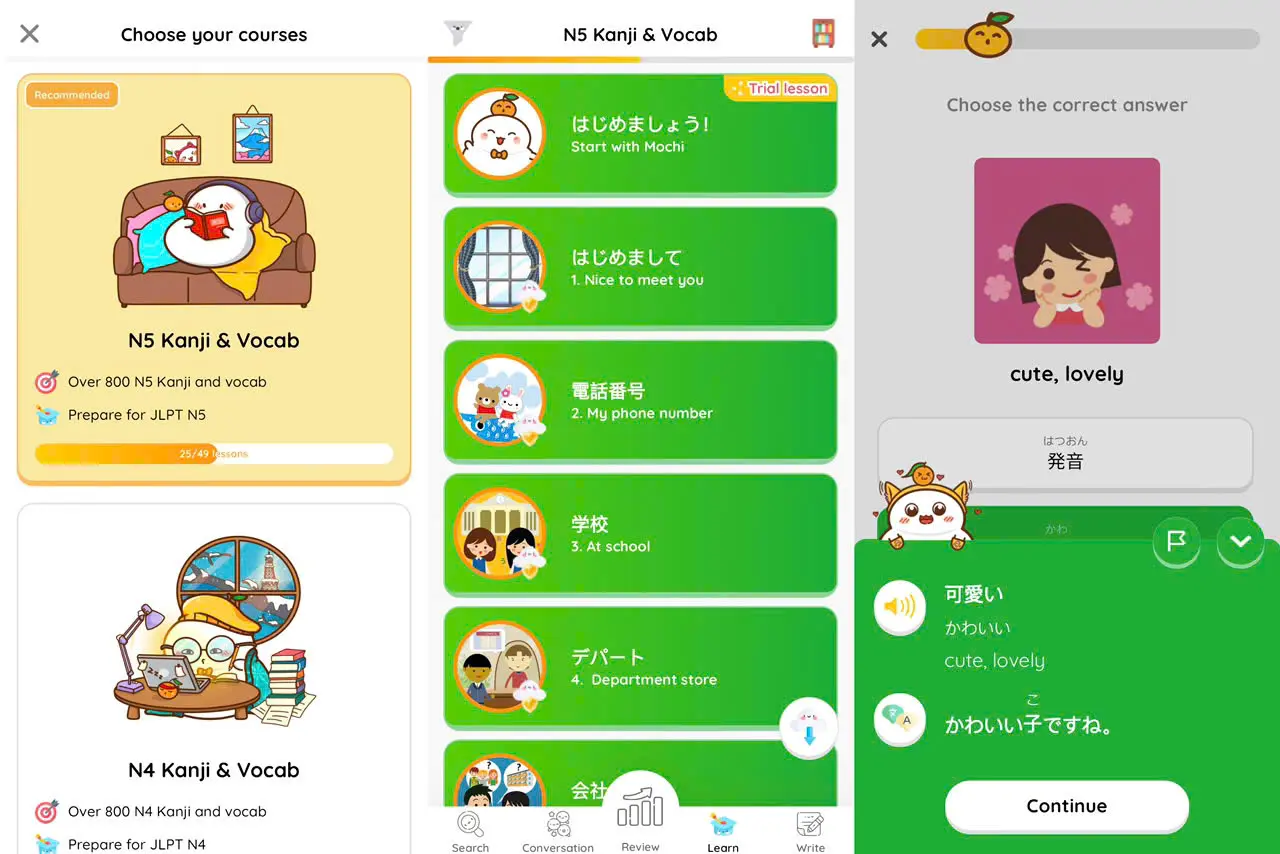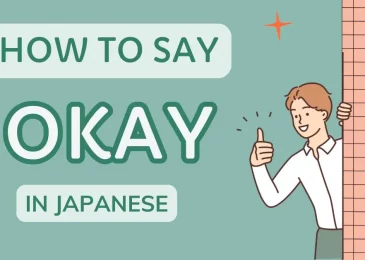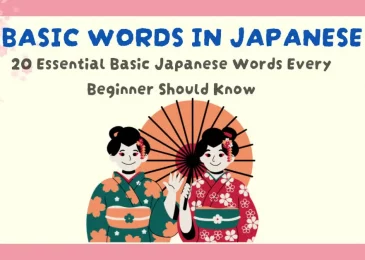When it comes to expressing cuteness in Japanese, many people instantly think of the word “kawaii.” However, the Japanese language is rich with various terms that capture different nuances of cuteness. Understanding these words not only enhances your vocabulary but also helps you appreciate the cultural significance of cuteness in Japan. This article will explore 15 essential words for saying “cute” in Japanese, providing you with a deeper insight into this charming aspect of the language.
Understanding “Cute” in Japanese
In Japanese culture, cuteness is celebrated and valued in many aspects of life, from fashion and art to everyday interactions. The concept of “cute” transcends simple appearances, embodying qualities that evoke warmth and affection. The various terms used to express cuteness each carry their unique connotations, making it important to understand their specific usages.
Popular words for “Cute” in Japanese
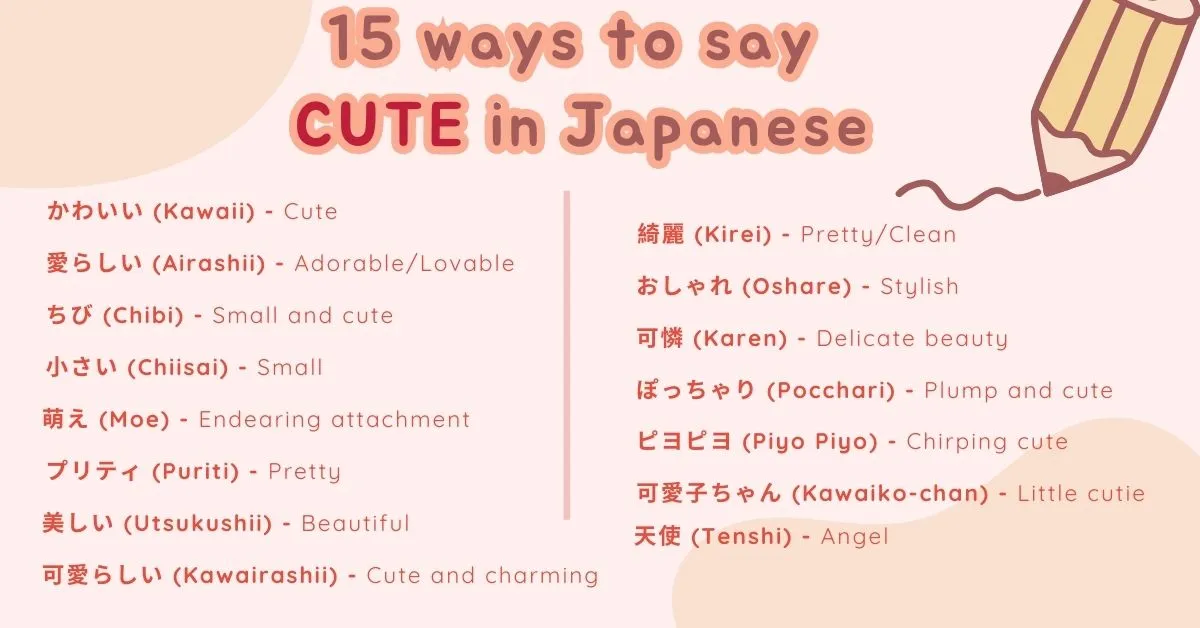
1. かわいい (Kawaii) – Cute
- Meaning: This is the most widely recognized term for “cute” in Japanese. It can refer to anything endearing, including animals, people, fashion items, and even inanimate objects. The concept of “kawaii” extends beyond just looks; it also encompasses behavior and personality traits that elicit a sense of affection.
- Example: その犬は本当にかわいい!(Sono inu wa hontou ni kawaii!) – That dog is really cute!
- “Kawaii” culture is pervasive in Japan, influencing fashion trends, art, and even social behaviors. It’s often associated with a sense of innocence and playfulness.
To learn more Japanese vocabulary like “kawaii,” visit MochiKanji for a fun and interactive learning experience!
MochiKanji offers a diverse range of courses tailored to various proficiency levels, from N5 to N2, ensuring that learners can progress at their own pace. Each course is designed to build vocabulary, grammar, and cultural insights, providing a comprehensive learning experience. The platform also features “Golden Time,” which helps you optimize your learning schedule and focus on essential vocabulary. Additionally, its interactive flashcards make it easy and enjoyable to memorize terms in context.
2. 愛らしい (Airashii) – Adorable/Lovable
- Meaning: This term conveys a deeper sense of endearment. It is used to describe someone or something that is sweet and has a lovable quality. It is often used for people and pets who have charming personalities or appearances that make them appealing.
- Example: 彼女はとても愛らしいです。(Kanojo wa totemo airashii desu.) – She is very adorable.
- “Airashii” is often used in more intimate or affectionate contexts, such as when talking about loved ones or close friends.
3. ちび (Chibi) – Small and cute
- Meaning: “Chibi” is an affectionate term that refers to small things, especially children, small animals, or cartoonish characters. It suggests a sense of cuteness that is tied to size and is often used in a playful manner.
- Example: そのちび猫は可愛すぎる!(Sono chibi neko wa kawai sugiru!) – That tiny cat is too cute!
- The term is frequently used in anime and manga, where characters are depicted in exaggeratedly small, cute forms.
4. 小さい (Chiisai) – Small
- Meaning: While “chiisai” literally means “small,” it is often associated with cuteness, particularly when referring to miniaturized versions of things. It highlights the appeal of smallness and the endearing qualities that come with it.
- Example: 小さい犬が好きです。(Chiisai inu ga suki desu.) – I like small dogs.
- In Japanese culture, smallness can be linked to delicacy and vulnerability, often increasing the perception of cuteness.
5. 萌え (Moe) – Endearing attachment
- Meaning: “Moe” describes a feeling of affection or attachment that fans often experience towards characters in anime and manga. It represents a warm emotional response that can make certain characters feel especially cute or lovable.
- Example: そのキャラクターは本当に萌えですね。(Sono kyarakutā wa hontou ni moe desu ne.) – That character is so adorable!
- “Moe” culture has led to the creation of a vast array of characters in the anime and gaming industries, reflecting the emotional connections fans develop.
6. プリティ (Puriti) – Pretty
- Meaning: A direct borrowing from the English word “pretty,” “puriti” is used casually and often in a lighthearted manner. It typically applies to people or things that have a pleasing appearance.
- Example: あなたはプリティです!(Anata wa puriti desu!) – You are pretty!
- This term is common in casual conversation and may be used by younger people when complimenting friends or peers.
7. 美しい (Utsukushii) – Beautiful
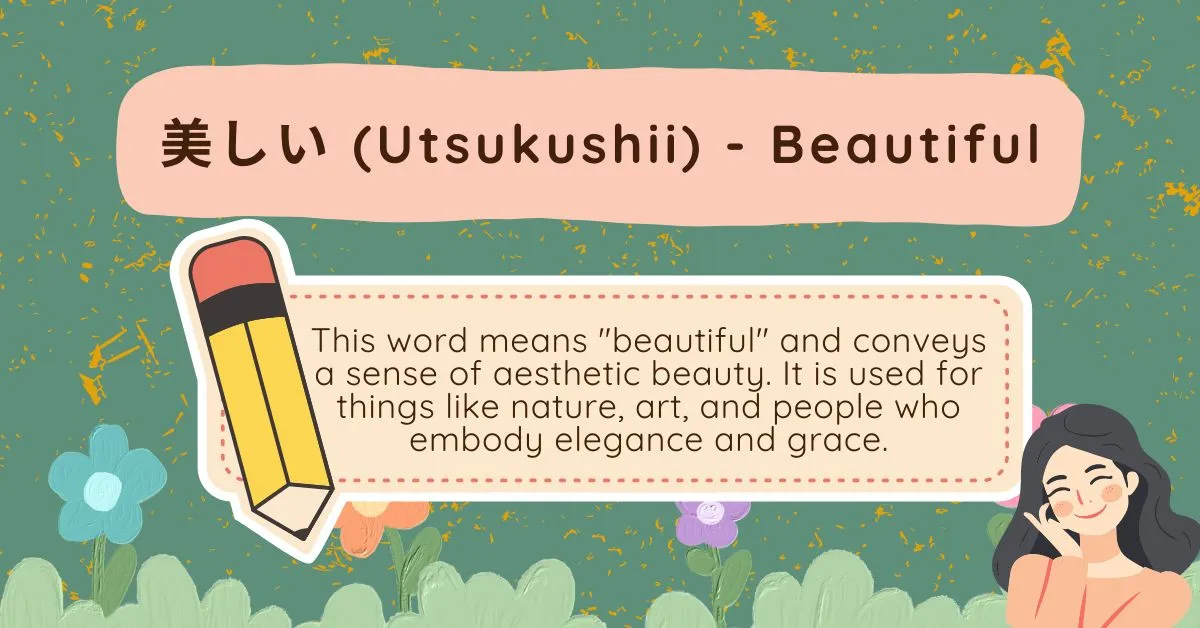
- Meaning: This word means “beautiful” and conveys a sense of aesthetic beauty. It is used for things like nature, art, and people who embody elegance and grace.
- Example: この花は美しいですね。(Kono hana wa utsukushii desu ne.) – These flowers are beautiful.
- “Utsukushii” is often used in more formal contexts and can describe beauty that is beyond just physical appearance, encompassing grace and artistry.
8. 可愛らしい (Kawairashii) – Cute and charming
- Meaning: Combining “kawaii” with a sense of charm, “kawairashii” implies a more sophisticated type of cuteness. It is often used for clothing, accessories, or anything that has a charming quality.
- Example: 可愛らしい服ですね。(Kawairashii fuku desu ne.) – That’s a cute outfit.
- This term is frequently used in fashion contexts, emphasizing the aesthetic appeal of clothing and design.
9. 綺麗 (Kirei) – Pretty/Clean
- Meaning: “Kirei” means “pretty” or “clean,” and is often used to describe visual appeal in people, places, or objects. It can refer to both physical beauty and cleanliness.
- Example: 彼女は綺麗です。(Kanojo wa kirei desu.) – She is beautiful.
- “Kirei” can also be used to describe well-kept spaces or objects, emphasizing neatness as a component of beauty.
- Meaning: This term means “stylish” and refers to a fashionable appearance. It often describes trendy clothing or accessories that carry a cute or attractive flair.
- Example: おしゃれな帽子ですね。(Oshare na boushi desu ne.) – That’s a stylish (and cute) hat.
- “Oshare” is often associated with youth culture and is a common compliment in fashion circles.
11. 可憐 (Karen) – Delicate beauty
- Meaning: “Karen” describes a fragile, delicate kind of beauty, often applied to flowers, gentle faces, or soft features. It conveys a sense of gentleness and tenderness.
- Example: 可憐な花が咲いています。(Karen na hana ga saiteimasu.) – Delicate flowers are blooming.
- This word is often used in literature and poetry to evoke imagery of softness and delicacy.
12. ぽっちゃり (Pocchari) – Plump and cute
- Meaning: “Pocchari” describes a cute roundness or plumpness, commonly used for features like chubby cheeks or animals with soft bodies. This term carries an affectionate tone.
- Example: ぽっちゃり猫が大好きです。(Pocchari neko ga daisuki desu.) – I love chubby cats!
- In Japanese culture, being “pocchari” is often seen as endearing and is celebrated in pets and characters alike.
13. ピヨピヨ (Piyo Piyo) – Chirping cute
- Meaning: This onomatopoeic term mimics the sound of chirping, often associated with baby animals like chicks. It evokes a sense of cuteness connected to small, lively creatures.
- Example: ピヨピヨのひよこはかわいい。(Piyo piyo no hiyoko wa kawaii.) – The chirping chicks are cute!
- This word is often used in children’s songs and stories, making it a fun and playful way to describe cute animals.
14. 可愛子ちゃん (Kawaiko-chan) – Little cutie
- Meaning: This playful term is an affectionate way to refer to a cute child or young person. It is similar to calling someone a “little cutie.”
- Example: あなたは可愛子ちゃんですね。(Anata wa kawaiko-chan desu ne.) – You’re a little cutie!
- “Kawaiko-chan” is often used by adults towards children or between friends to express affection.
15. 天使 (Tenshi) – Angel
- Meaning: “Tenshi” means “angel” and describes someone who is angelically cute or embodies pure, innocent beauty. It can also refer to a kind-hearted person.
- Example: 彼女は天使みたいです。(Kanojo wa tenshi mitai desu.) – She’s like an angel.
- This term is often used in both everyday conversation and media, where characters or people are portrayed with angelic qualities.
Cultural significance of “cute” in Japanese society
Cuteness plays a significant role in Japanese culture, influencing fashion trends, media, and everyday interactions. The “kawaii” culture has given rise to numerous iconic characters and brands, such as Hello Kitty and Pokémon, showcasing how deeply ingrained the concept of cuteness is in Japanese life. From fashion to social behavior, being cute is often associated with innocence, playfulness, and charm, reflecting a broader societal appreciation for endearing qualities. This cultural phenomenon has even influenced global trends, leading to the popularization of kawaii aesthetics worldwide.
How to use these words in everyday conversation
To effectively incorporate these words into your daily life, try using them when complimenting friends, describing pets, or talking about your favorite anime characters. Here are a few practical tips:
- Compliment friends: Use terms like “puriti” or “airashii” when praising friends’ outfits or styles.
- Discuss pets: When talking about animals, terms like “kawaii,” “pocchari,” and “chibi” can add a playful touch to your descriptions.
- Anime references: Engage in conversations about anime characters using “moe” and “kawaii,” which can resonate with fellow fans.
For example, when you see a cute puppy, you might say, “その犬は本当にかわいい!” (That dog is really cute!). Practice using these terms in various contexts to enhance your communication skills and connect more deeply with Japanese culture.
Conclusion
With this expanded list of Japanese expressions, you now have a diverse set of words to describe all kinds of cuteness! From adorable animals to stylish outfits, these terms will help you express the wide array of “cute” in Japanese. Embrace these words in your conversations, and you’ll be well-equipped to appreciate the charm of the Japanese language and culture.

